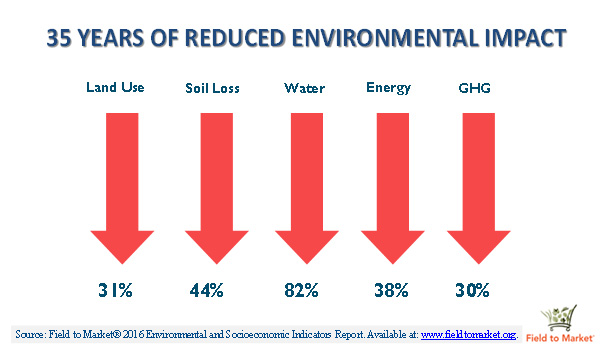March 15, 2018
Office of Pesticide Programs
Regulatory Public Docket (7502P)
U.S. Environmental Protection Agency
1200 Pennsylvania Ave., NW Washington, DC 20460
RE: Docket ID Number EPA-HQ-OPP-2011-0483
Dear Ms. Barlow:
The National Cotton Council (NCC) appreciates the opportunity to comment on the Environmental Protection Agency’s (EPA) “Avermectin Macrocyclic Lactones, Abamectin and Emamectin. Cumulative Screening Risk Assessment”, “Preliminary Ecological Risk Assessment for the Registration Review of Emamectin Benzoate”, and “Drinking Water Assessment for Registration Review of Emamectin Benzoate.” The NCC urges EPA to recognize the unique mode of action (MOA) abamectin and Emamectin Benzoate offers for resistance management scenarios. As EPA urges producers to recognize the values of rotating chemical MOA’s for resistance management purposes, EPA must recognize rotation is not possible unless there are multiple MOA’s available. This product especially serves critical mite resistance management objectives.
The NCC is the central organization of the United States cotton industry. Its members include producers, ginners, cottonseed processors and merchandizers, merchants, cooperatives, warehousers and textile manufacturers. A majority of the industry is concentrated in 17 cotton-producing states stretching from California to Virginia. U.S. cotton producers cultivate between 9 and 12 million acres of cotton with production averaging 12 to 18 million 480-lb bales annually. The downstream manufacturers of cotton apparel and home furnishings are located in virtually every state. Farms and businesses directly involved in the production, distribution and processing of cotton employ more than 125,000 workers and produce direct business revenue of more than $21 billion. Annual cotton production is valued at more than $5.5 billion at the farm gate, the point at which the producer markets the crop. Accounting for the ripple effect of cotton through the broader economy, direct and indirect employment surpasses 280,000 workers with economic activity of almost $100 billion. In addition to the cotton fiber, cottonseed products are used for livestock feed and cottonseed oil is used as an ingredient in food products as well as being a premium cooking oil.
First, the NCC appreciates the EPA’s thorough review of merited science that demonstrates the safety of this product with regards to human health in the “Avermectin Macrocyclic Lactones, Abamectin and Emamectin. Cumulative Screening Risk Assessment.” The unique MOA (Group 6, Glutamate-gated chloride channel{GluCl} allosteric modulators, Insecticide Resistance Action Committee (IRAC), IRAC Mode of Action Classification Scheme, July 2017, Version 8.3), provides producers with an insect management tool that reduces risk concerns for human health and safety.
The Risk Assessment demonstrates no scientific evidence for carcinogenicity to humans, sufficient scientific evidence to reduce FQPA Safety factors, aggregate risk assessment of no concern, and no dietary risk of concern. Even with the remaining uncertainty factors, it is clearly a product of low, if any, human health concerns when used as labeled.
The NCC has commented to EPA’s docket “EPA-HQ-OPP-2013-0360” and would refer review for additional use of Avamectin.
The NCC has reviewed EPA’s “Preliminary Ecological Risk Assessment for Registration Review of Emamectin Benzoate” and urges the EPA to refine the Ecological Risk Assessment to reflect data and realistic use. The EPA acknowledges the data show that emamectin benzoate is not toxic to terrestrial plants, fish, and aquatic plants.
The NCC is also concerned with EPA assessment that large amounts of the product are moved from the field through soil erosion and results in sediment ponds. The cotton industry has made great strides in soil preservation and continues to achieve higher goals of soil retention and health (http://cottontoday.cottoninc.com/agriculture-4/soil/) as illustrated in the chart below based on cotton production data collected by the Field to Market Alliance.

Further to this point, seed treatments and herbicide tolerant crops have enabled growers to expand adoption of reduced tillage and in many areas, incorporate winter cover crops (http://cottontoday.cottoninc.com/agriculture-4/soil/ ).
“To control weeds and diseases, traditionally producers were forced to remove all plant residues and weeds from the soil surface prior to planting, and then continue to cultivate the soil while the crop was growing to control late emerging weeds. While tilling does control some disease and weeds, it also loosens the soil. Today, thanks to seed treatment fungicides, herbicides and herbicide tolerant cotton, diseases and weeds can be controlled without tilling, allowing what is referred to as “no-till” and conservation tillage systems to be adopted.
Cotton has made great strides in reducing tillage and using winter, or cover crops. The number of acres of cotton produced with reduced-tillage systems has been increasing for the last 10 years. Today, according to a study done by Cotton Incorporated, two thirds of growers say they use some form of conservation tillage. [ Reed, J.N., E.M. Barnes and K.D. Hake. 2009. US Cotton Growers Respond to Natural Resource Survey. Technical Information Section. International Cotton Advisory Committee, THE ICAC RECORDER, Vol. XXVII. No. 2, June 2009 Reed, J.N., E.M. Barnes and K.D. Hake. 2009. US Cotton Growers Respond to Natural Resource Survey. Technical Information Section. International Cotton Advisory Committee, THE ICAC RECORDER, Vol. XXVII. No. 2, June 20097] In addition to preserving the soil, reducing tillage significantly reduces fuel use and its associated cost to growers.”
The NCC urges EPA to refine the Ecological Risk Assessment with field relevant data while moving forward with this registration review. The NCC additionally urges EPA to carefully examine the benefits of this material and the potential impact on the entire cotton industry with inadequate products for control of lepidoptera. Although many cotton producers plant BT cotton varieties (which still warrant lepidopteran foliar treatments at times of high populations), some of our producers have consciously decided to produce cotton without herbicide resistant and/or Plant Incorporated Protectant traits. Multiple MOA’s must remain available to provide long term protection against cotton-damaging lepidopteran species.
Thank you for allowing the NCC to provide comments on the Environmental Protection Agency’s (EPA) “Avermectin Macrocyclic Lactones, Abamectin and Emamectin. Cumulative Screening Risk Assessment”, “Preliminary Ecological Risk Assessment fo the Registration Review of Emamectin Benzoate”, and “Drinking Water Assessment for Registration Review of Emamectin Benzoate.”
Respectfully,
Steve Hensley
Senior Scientist, Regulatory and Environmental Issues
National Cotton Council

